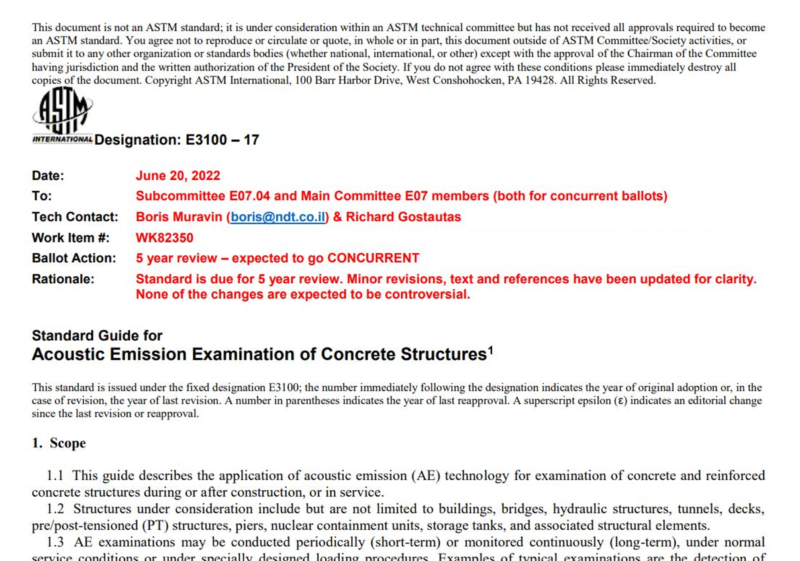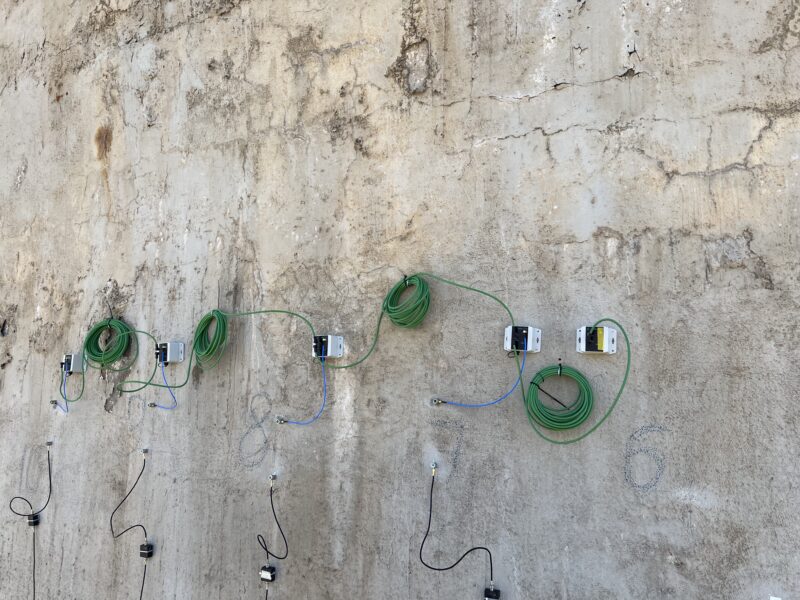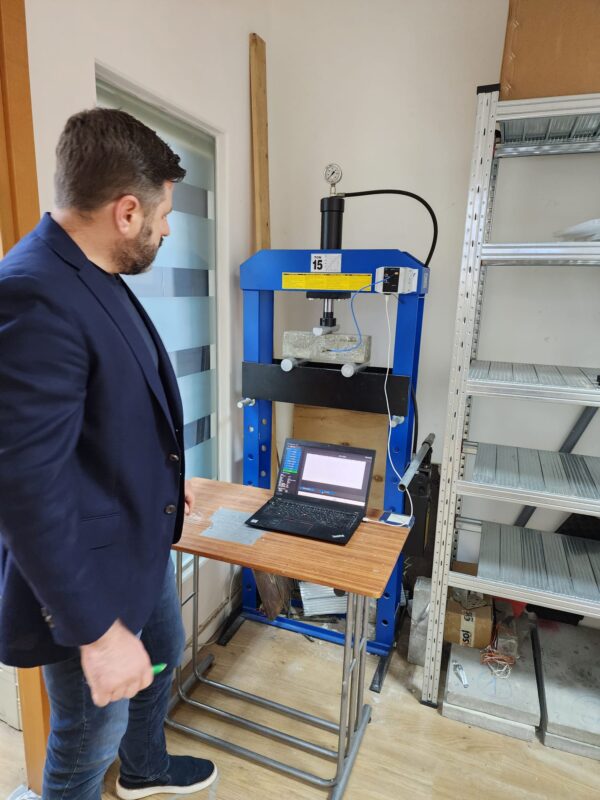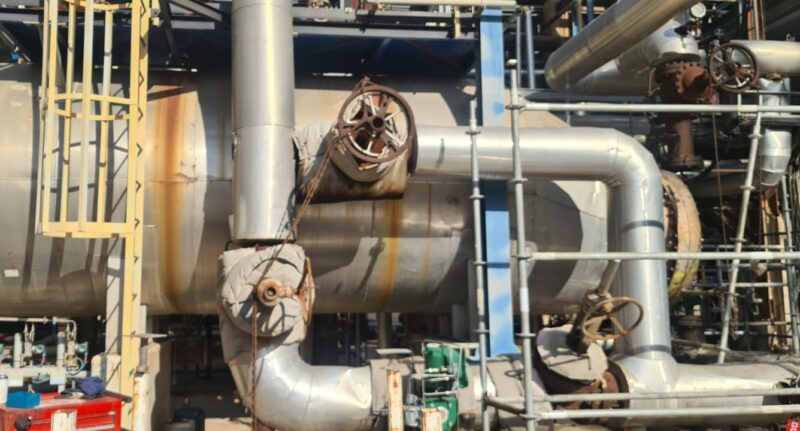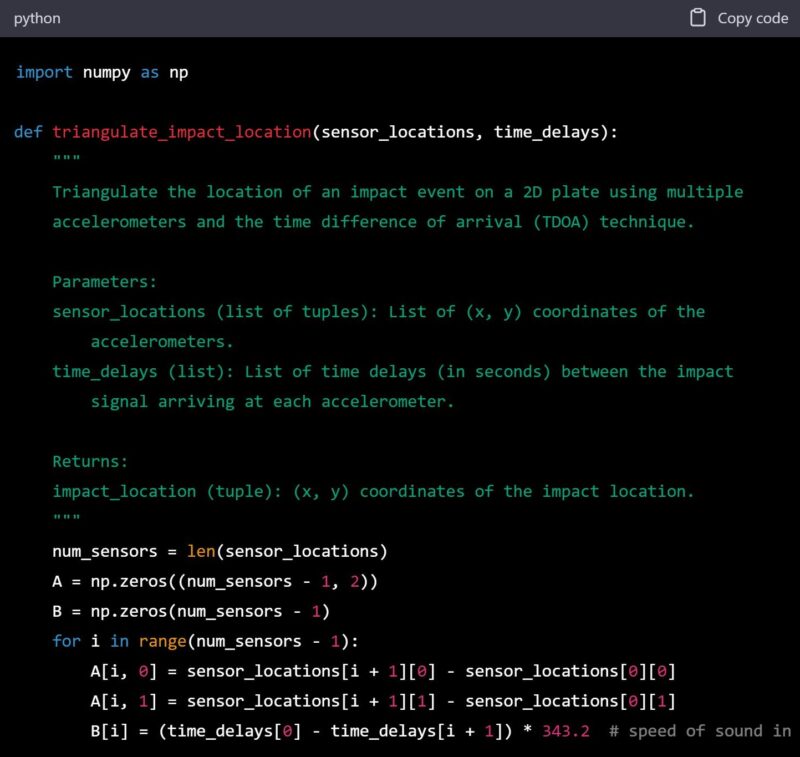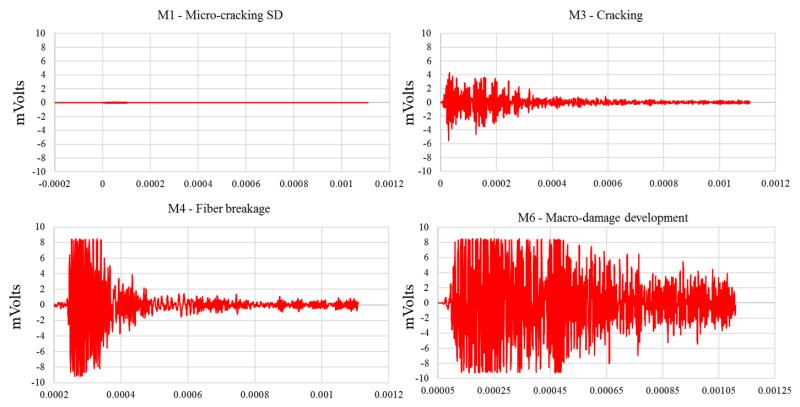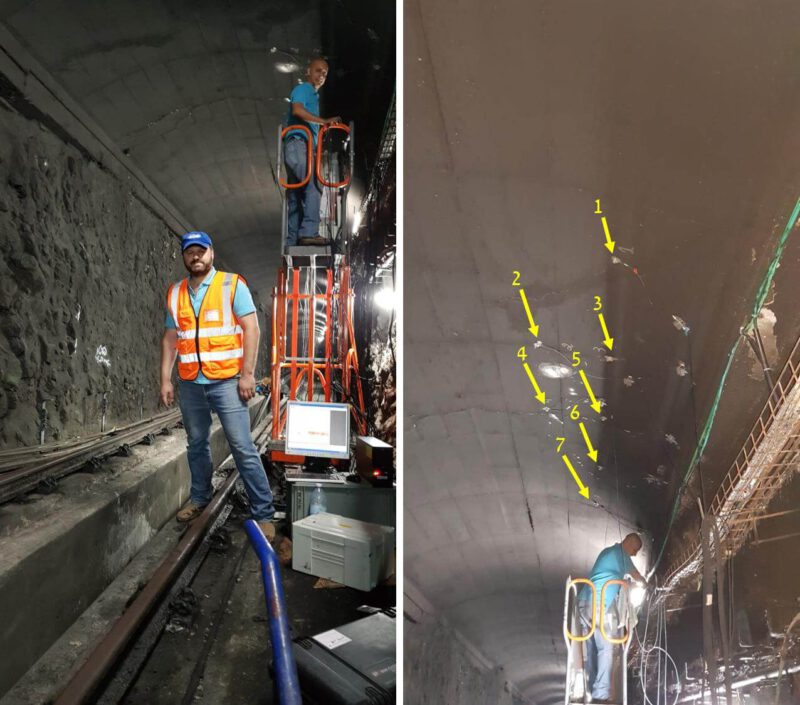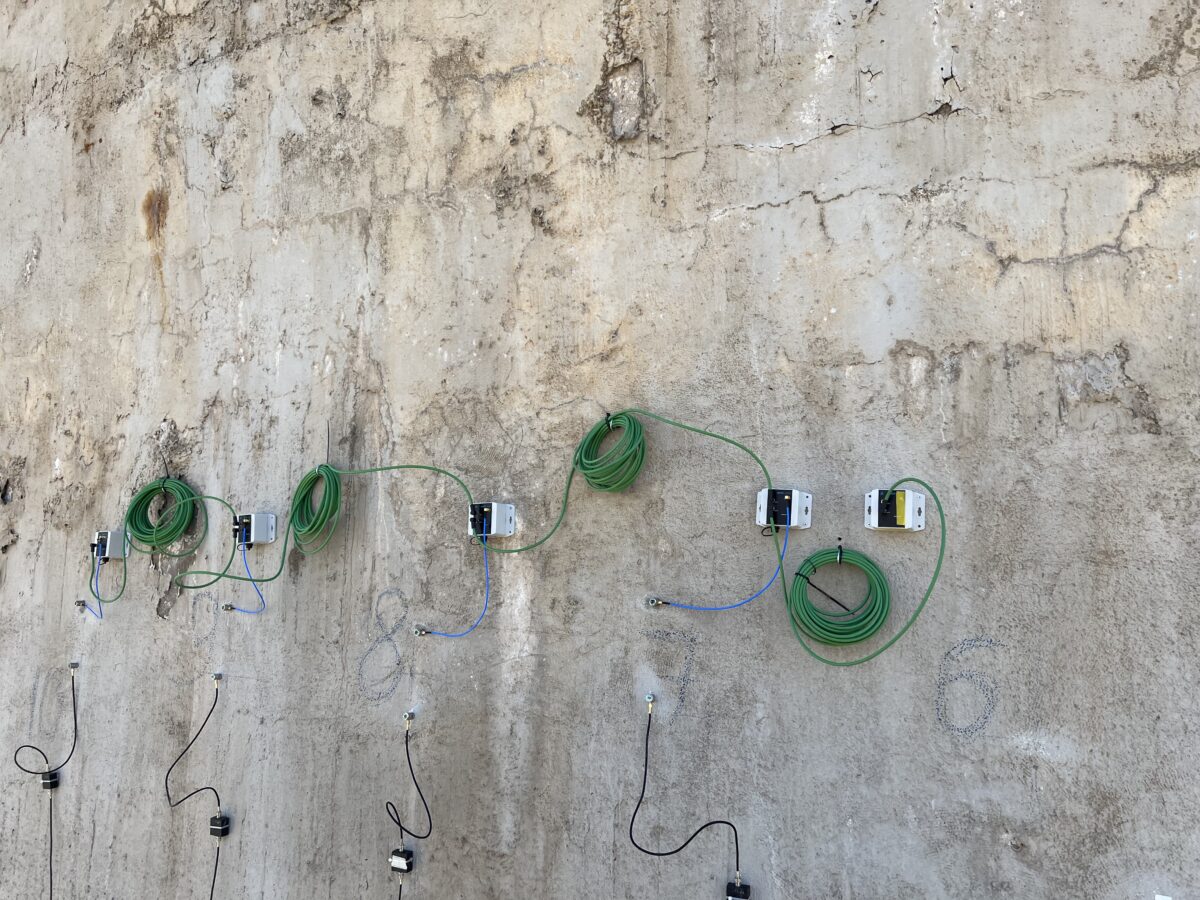Photo: Ariel IOT remote acoustic emission system by EmmaSensing Ltd. in continuous monitoring of reinforced concrete structure with corrosion damage.
Rebar corrosion is one of the primary damage mechanisms in reinforced concrete structures. The consequences of rebar corrosion include:
1. Loss of Strength: Corroded steel loses its structural strength, compromising the integrity of the reinforced concrete.
2. Cracking and Spalling: As the rebar corrodes, it expands, leading to cracking and spalling of the concrete cover. This can expose more of the rebar to corrosive elements, exacerbating the problem.
3. Reduced Durability: Corrosion can significantly reduce the service life and durability of a reinforced concrete structure.
There is considerable difficulty to detect and assess the reinforced concrete damage due to corrosion. Corrosion often occurs beneath the concrete surface, making it challenging to visually identify the extent of the damage. Corrosion can be localized, occurring in specific areas rather than uniformly across a structure. This makes it challenging to assess the overall condition accurately. Environmental conditions vary, and the rate of corrosion can depend on factors such as temperature, humidity, and exposure to corrosive agents. These variations make it challenging to predict and assess corrosion uniformly. In some cases, parts of a structure may be difficult to access, making it challenging to inspect and assess the condition of the reinforcing steel.
To overcome these challenges, a combination of inspection techniques and monitoring methods is often employed. Acoustic Emission (AE) testing stands out among other methods for assessing corrosion and structural health due to its unique advantages and capabilities. AE allows:
1. Early Detection of Damage
AE testing can detect the acoustic signals generated by microcracks at an early stage, providing an early warning of potential corrosion activity. This early detection allows for proactive maintenance and intervention before the damage becomes severe.
2. Continuous Monitoring
AE testing enables continuous monitoring over time. This is particularly beneficial for structures where the progression of corrosion or other forms of deterioration needs to be tracked continuously. Continuous monitoring allows for a more comprehensive understanding of the structural health compared to periodic inspections.
3. Real-Time Assessment
AE testing provides real-time data, allowing for immediate assessment of the structural condition. This real-time aspect is advantageous for critical structures or situations where prompt decisions and interventions are required.
4. Localized Damage Detection
AE sensors can help localize areas of damage within a structure. This capability is valuable for pinpointing regions where corrosion is more active or where the concrete has undergone significant distress. Localizing the damage aids in targeted maintenance and repair efforts.
5. Dynamic Stress Assessment
AE testing can capture dynamic events such as loading or environmental changes, providing insights into how these events affect the structural integrity. This is important for understanding the real-world performance of a structure.
6. Identification of Active Corrosion
AE testing can differentiate between active and passive corrosion processes based on the distinctive acoustic signals they produce. This information is crucial for assessing the urgency of maintenance or repair interventions.
However, it’s important to note that no single method is universally superior, and the choice of a testing method depends on factors such as the specific requirements of the assessment, the nature of the structure, and the goals of the inspection. Therefore, application of other NDT and monitoring methods can be required.
Applications
There is a wide variety of application examples where AE technology was successfully applied:
- Monitoring of rebar corrosion in buildings, bridges, and tunnels.
- Detection and assessment of corrosion in underground sections of columns.
- Detection of corrosion in the foundation of poles.
- Detection of corrosion in silos and chimneys.
- Assessment of corrosion in chemical plant structures.
- Assessment of corrosion in concrete in port structures.
